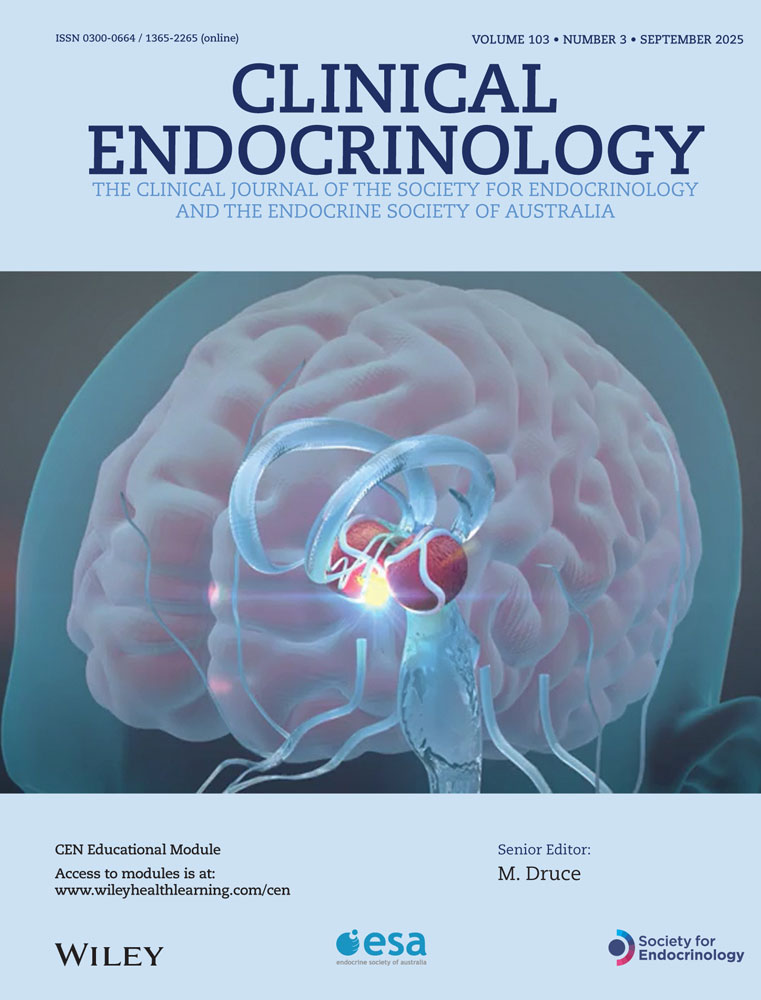Growth hormone-releasing hormone (GHRH) and GHRH receptor (GHRH-R) isoform expression in ectopic acromegaly
Abstract
Bronchial endocrine neoplasms causing acromegaly due to ectopic production of growth hormone (GH)-releasing hormone (GHRH) have been reported. We describe the case of a 39-year-old man with clinical and biochemical acromegaly. Magnetic resonance imaging revealed an enlarged pituitary, which was confirmed histologically to harbour somatotroph hyperplasia. Further investigations identified a circumscribed central mass in the right lung which was surgically resected and histologically confirmed to be an endocrine tumour with strong immunopositivity for GHRH, synaptophysin and chromogranin; the lesion also exhibited mild positivity for peptide YY, calcitonin gene-related peptide (CGRP), glucagon-like peptide (GLP)−1, corticotrophin-releasing hormone (CRH), tyrosine hydroxylase, vasoactive intestinal peptide (VIP) and enkephalin. S100 protein was identified in stellate cells surrounding nests of epithelial tumour cells. The MIB-1 antibody labelled about 10% of the tumour cells. We established that the tumour not only produced GHRH but the GHRH-receptor (GHRH-R) as well. GHRH and GHRH-R mRNA were identified and the latter was characterized as two variants, a full-length transcript and a truncated splice variant that has been described in human pituitary somatotroph adenomas. We suggest that GHRH expression by this tumour and the presence of its receptor may be responsible for enhanced growth. The expression of a truncated splice variant that is unable to transduce GHRH signalling may be implicated in the less aggressive behaviour of well-differentiated endocrine tumours that produce GHRH compared with small-cell lung carcinomas that are very responsive to GHRH growth stimulation.




